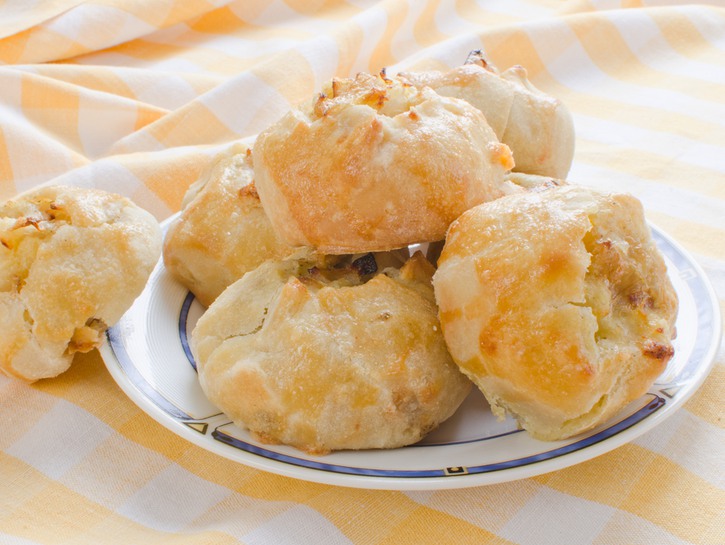Knishes are perhaps the most underrated comfort food of all time and it’s a mystery as to why they’re not more common across the U.S. A knish (pronounced with the “k”) is a snack that originated in Eastern Europe and was made popular in North America by Jewish immigrants in New York.
What Exactly Is A Knish?
Similar to a kolache or empanada, a knish is a dough pocket traditionally stuffed with a potato, onion, and seasoning filling. Basically, it’s a savory mashed potato pocket and it’s just as heavenly as it sounds. Though potato and onion is the OG classic flavor, there are many varieties of knish. They are usually baked, but they can also be fried. You can also fill them with pretty much anything your heart desires. Classic fillings include potatoes, cabbage, cheese, and kasha (buckwheat grain). Some of the modern fillings include jalapeño-cheddar, broccoli, falafel, and BBQ chicken. Knishes aren’t just savory treats – they can also be sweet with fillings like cream cheese, cherry, and apple. With all these varieties, the sky is the limit when it comes to knishes.
History Of Knishes
The first knishes appeared in 17th century Poland and were brought to America in the early 20th century thanks to Eastern European Jewish immigrants. As they settled in New York, these immigrants opened knish bakeries (knisheries) and knishes soon gained popularity in the Northeast.
Knish bakeries gave 20th century Jewish immigrants their first taste of economic success in the United States, which gave them the security to move out of New York City and into the suburbs. This migration eventually lead to a decline in New York knish bakeries. However, Yonah Schimmel Knish Bakery, New York’s oldest and last remaining knishery, still resides at its original location on Houston Street in the Lower East Side.
For many folks, eating a knish isn’t just about indulging in a savory snack – it’s about nostalgia and culture. Knishes are a staple in Jewish homes all over the Northeast and are a true testament of how food can bring people together and transport you to another time and place. In an interview with the Boston Globe, Allen Gellerman, who owns Rubin’s Kosher Restaurant said, “People come in and tell me, ‘This is exactly what my mother or my grandmother would serve me.’ They feel like they’re back at home. It’s a great feeling.”

How To Make Knishes
If you don’t live in New York or near a Jewish deli, you can always make knishes at home. This recipe is pretty close to what you would in New York. If you want the real thing and don’t want to make it yourself, you can always have Yonah Schimmel knishes shipped to anywhere in the U.S.
